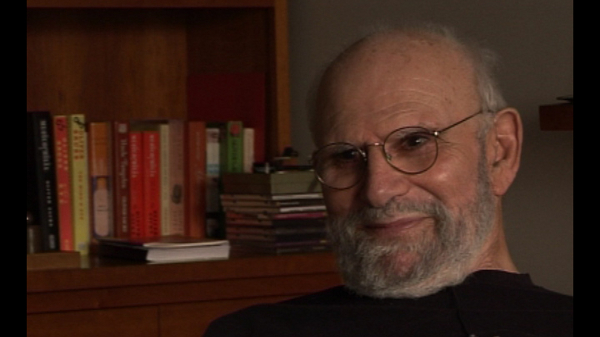NEXT STORY

Marching with the Deaf and Tourette’s society
RELATED STORIES

NEXT STORY

Marching with the Deaf and Tourette’s society
RELATED STORIES


|
Views | Duration | |
|---|---|---|---|
| 201. Isaacson's artwork appears in colour in The New York Review... | 197 | 01:36 | |
| 202. Marching with the Deaf and Tourette’s society | 184 | 04:10 | |
| 203. Articles on deaf people for Bob Silvers become a book | 168 | 00:45 | |
| 204. Occasionally writing for The New Yorker | 218 | 00:58 | |
| 205. Writing about the 'oldest conductor': David Randolph | 184 | 02:34 | |
| 206. I am old-fashioned | 1 | 352 | 00:38 |
| 207. John Bennet, my editor at The New Yorker | 407 | 00:35 | |
| 208. Bob Silvers: the most scrupulous editor | 223 | 01:02 | |
| 209. You are famous now: the success of 'Hat' and 'Awakenings' | 187 | 03:02 | |
| 210. Writing for the academic journals | 386 | 03:40 |


Bob Silvers was my editor after The Lost Mariner, and I took to him The Case of the Colour-Blind Painter, and I said to Bob, 'You know, one can’t really talk about this patient without having some reproductions in colour'. For example, showing the artwork he’d tried to do in colour, which is just a hopeless, chromatic chaos, unless you have a black-and-white reproduction of it. And I also wanted to show the photograph of... this dish with a real orange on it to illustrate the difference. Bob said, 'We’ve never done anything in colour before' and I said, 'There’s always a first time!' and so this was it. And, in fact... this dish with an orange and some of Isaacson’s pictures with colour, and otherwise, were published and this was the first time The New York Review of Books used colour.
Of course, poor Isaacson couldn’t see it, but he felt glad that... that it was his story which had introduced colour to The New York Review of Books.
Oliver Sacks (1933-2015) was born in England. Having obtained his medical degree at Oxford University, he moved to the USA. There he worked as a consultant neurologist at Beth Abraham Hospital where in 1966, he encountered a group of survivors of the global sleepy sickness of 1916-1927. Sacks treated these patients with the then-experimental drug L-Dopa producing astounding results which he described in his book Awakenings. Further cases of neurological disorders were described by Sacks with exceptional sympathy in another major book entitled The Man Who Mistook His Wife For A Hat which became an instant best seller on its publication in 1985. His other books drew on his rich experiences as a neurologist gleaned over almost five decades of professional practice. Sacks's work was recognized by prestigious institutions which awarded him numerous honours and prizes. These included the Lewis Thomas Prize given by Rockefeller University, which recognizes the scientist as poet. He was an honorary fellow of both the American Academy of Arts and Letters and the American Academy of Arts and Sciences, and held honorary degrees from many universities, including Oxford, the Karolinska Institute, Georgetown, Bard, Gallaudet, Tufts, and the Catholic University of Peru.
Title: Isaacson's artwork appears in colour in "The New York Review of Books"
Listeners: Kate Edgar
Kate Edgar, previously Managing Editor at the Summit Books division of Simon and Schuster, began working with Oliver Sacks in 1983. She has served as editor and researcher on all of his books, and has been closely involved with various films and adaptations based on his work. As friend, assistant, and collaborator, she has accompanied Dr Sacks on many adventures around the world, clinical and otherwise.
Tags: The Case of the Colour-Blind Painter, The New York Review of Books, Bob Silvers, Isaacson
Duration: 1 minute, 36 seconds
Date story recorded: September 2011
Date story went live: 02 October 2012